Why you can trust Tom's Hardware
To read about our monitor tests in-depth, please check out Display Testing Explained: How We Test PC Monitors. We cover brightness and contrast testing on page two.
Uncalibrated – Maximum Backlight Level
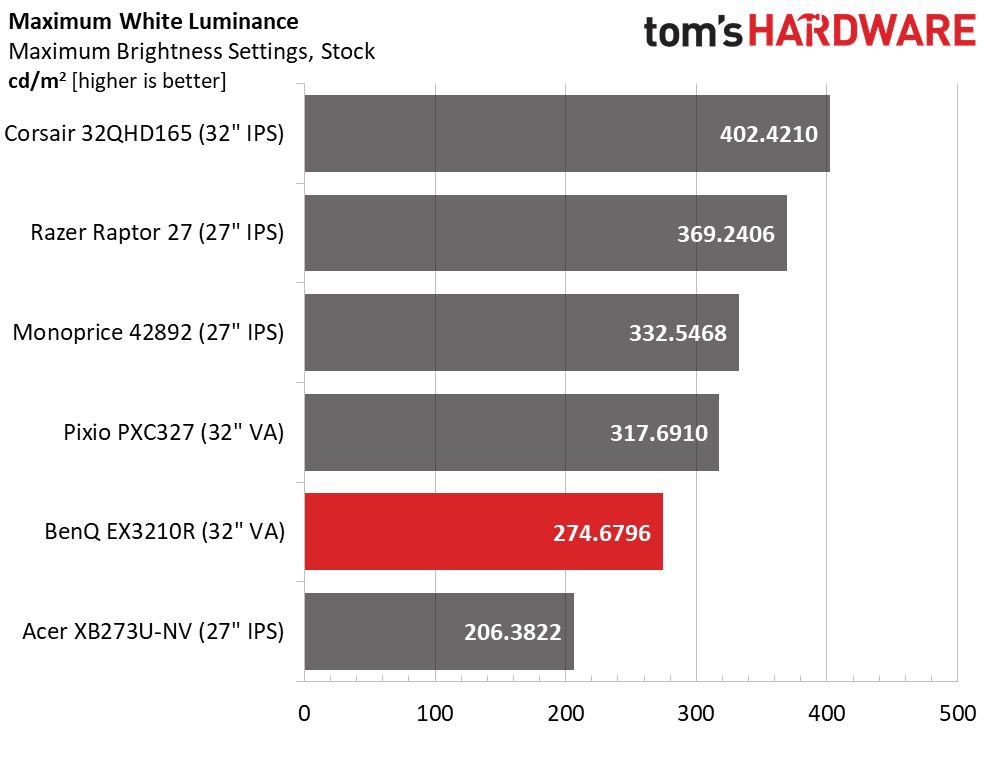
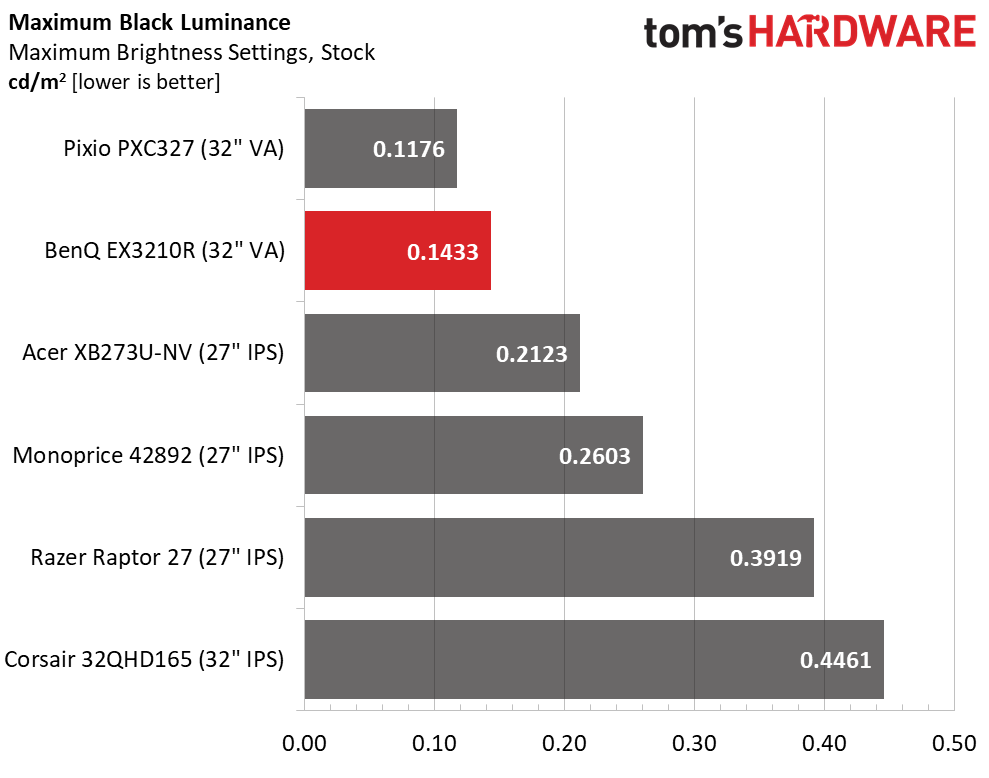
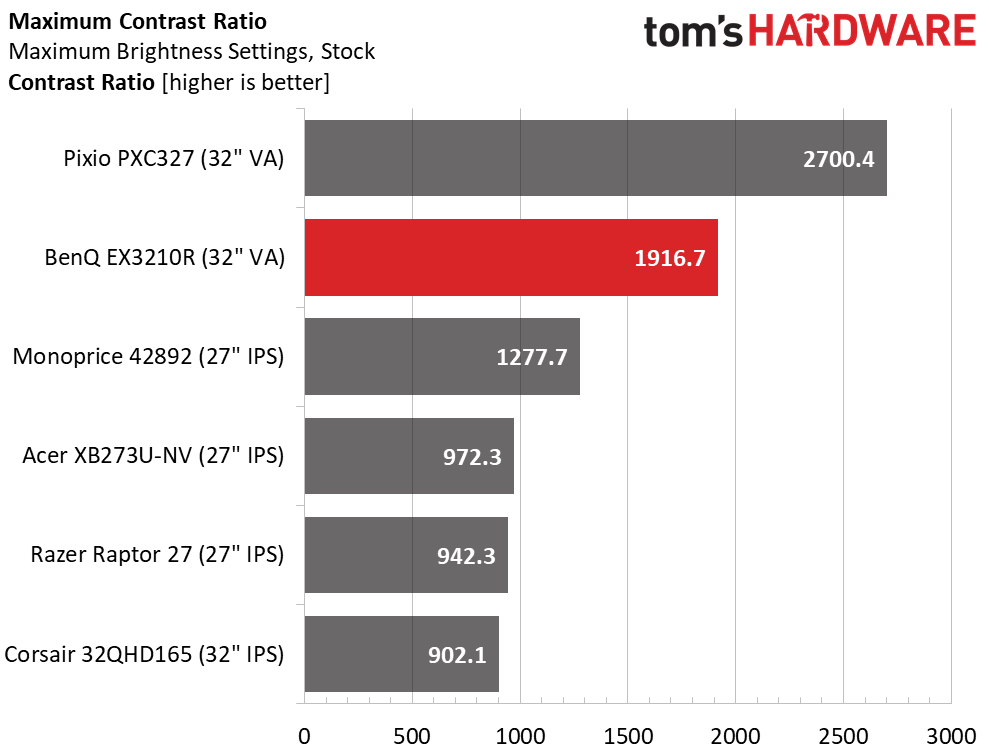
BenQ rates the EX3210R at 300 nits in SDR mode, but my sample came up slightly short of that mark with 274 nits. That’s close enough that it will be difficult to tell the difference in a side-by-side test. A panel this large doesn’t need more than 200 nits peak to be bright enough unless you’re in a room that receives a lot of sunlight. The EX3210R provides enough output for nearly any environment.
Black levels are low, though not as low as some other VA screens like the PXC327. But the resulting contrast is still around double that of an IPS monitor. That’s a difference that can easily be seen. The EX3210R provides plenty of deep blacks, good shadow detail and a picture that pops in its default RPG picture mode.
After Calibration to 200 nits
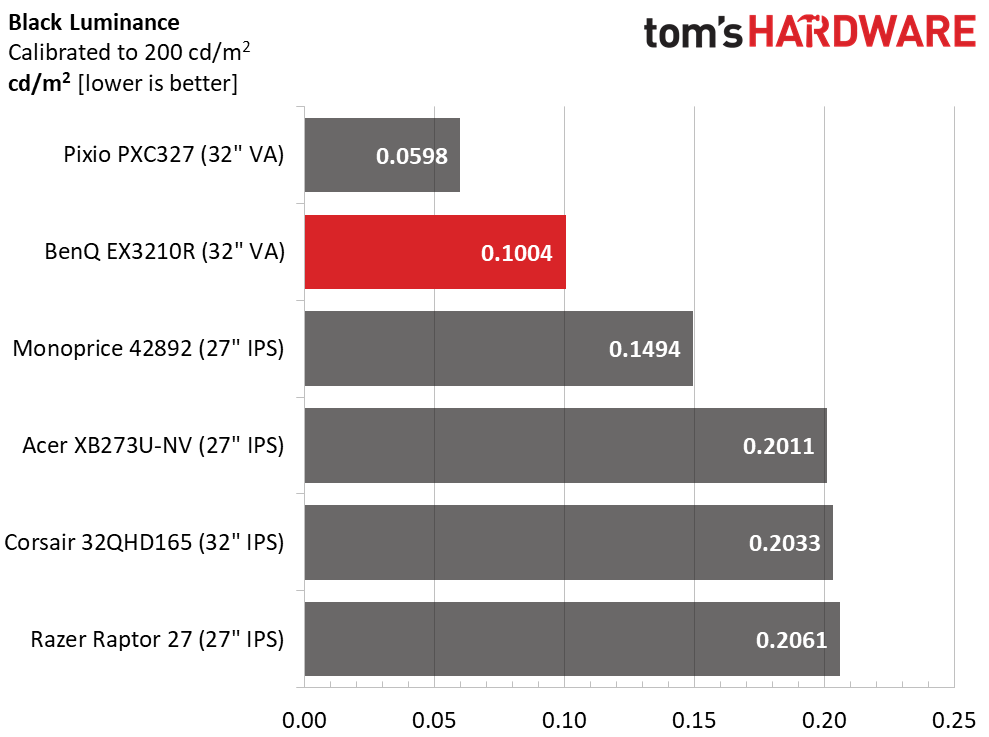
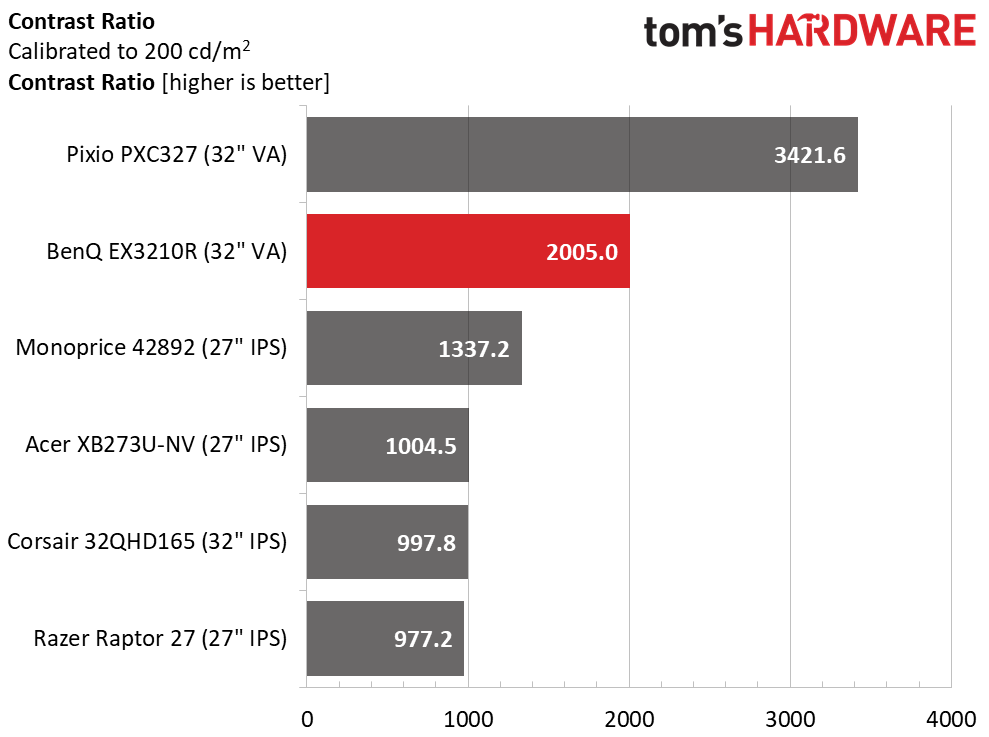
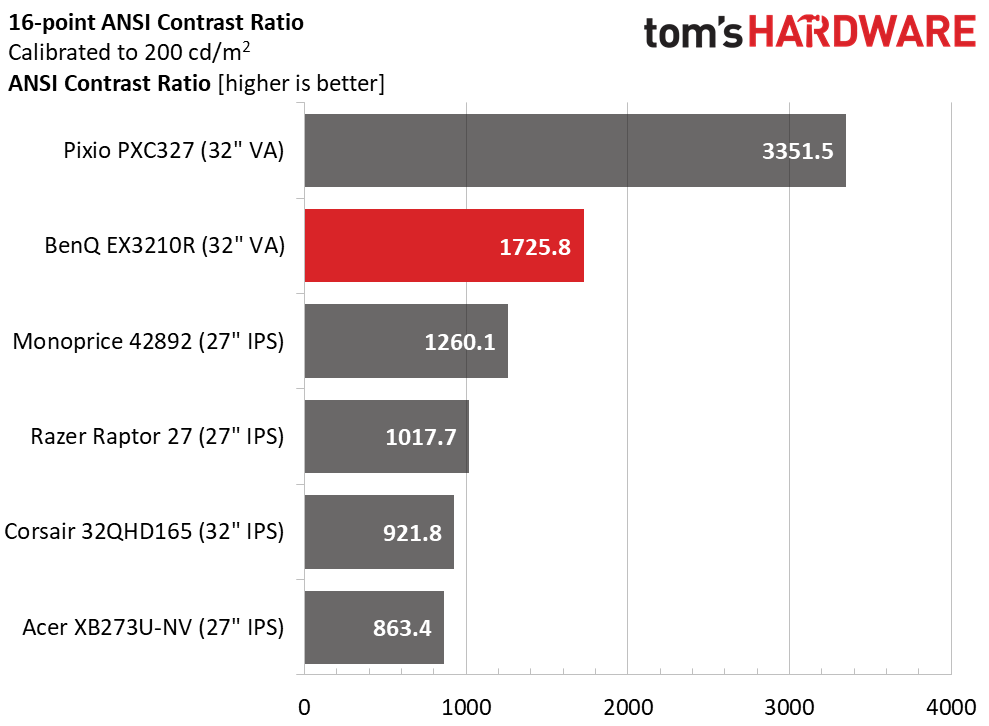
Calibration improves the EX3210R’s contrast slightly; it is now just over 2,000:1. While it is visually better than the other screens, it isn’t quite as good as the Pixio with a 3,421.6:1 ratio. However, it definitely has a greater dynamic range than the IPS screens.
The ANSI test reveals good screen uniformity and good quality control. 1,725.8:1 means content will appear sharp and detailed. And it will look sharper than a 32-inch IPS monitor in QHD resolution. This is very good performance.
Get Tom's Hardware's best news and in-depth reviews, straight to your inbox.
Current page: Brightness and Contrast
Prev Page Response, Input Lag, Viewing Angles and Uniformity Next Page Grayscale, Gamma and Color
Christian Eberle is a Contributing Editor for Tom's Hardware US. He's a veteran reviewer of A/V equipment, specializing in monitors. Christian began his obsession with tech when he built his first PC in 1991, a 286 running DOS 3.0 at a blazing 12MHz. In 2006, he undertook training from the Imaging Science Foundation in video calibration and testing and thus started a passion for precise imaging that persists to this day. He is also a professional musician with a degree from the New England Conservatory as a classical bassoonist which he used to good effect as a performer with the West Point Army Band from 1987 to 2013. He enjoys watching movies and listening to high-end audio in his custom-built home theater and can be seen riding trails near his home on a race-ready ICE VTX recumbent trike. Christian enjoys the endless summer in Florida where he lives with his wife and Chihuahua and plays with orchestras around the state.